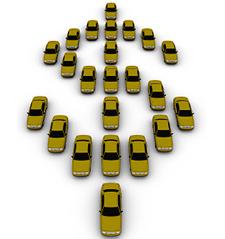Pricing to Move the Market
What follows is a question about pricing in a negotiation-free environment. I thought the response would be helpful for other dealers considering the same.
Have you ever done or heard of any studies on price elasticity as it pertains to used/pre-owned cars using the vAuto approach. Our dealership group is a current vAuto customer, and we are thinking of going to one price or some form of one price. We will be using the Live Market View as our model and we are going to structure a marketing theme based on these principles. My question is this, knowing that there are so many makes and models and so many variables in the market place, such as color, option content, trim level, condition etc. etc. etc., how do we price our cars to get the gross we need and the increased volume to cover the lost gross for being aggressively priced in the market.
I’m using vAuto now and have been a student and love the system. After being in the car business for 25 years it is the best tool I’ve seen for pricing and eliminating over age. I realize that pricing is a moving target and must be constantly monitored. In other words, is there significant added volume by being priced at say, 3rd out of 25 in a particular make model or would we be better served to be priced at 8th out of 25 and keeping some additional gross? We are going to have a meeting soon and I would like to know if you know of any break points where volume picks up significantly with the lower ranking in price rank and vRank vs. a higher price ranking and vRank. Additionally, this message would not be complete without mentioning Kathi Neuman and the great job she has done with our group. She is great to work with and knowledgeable as well. She is always there for us and helps out when asked. Same goes for the rest of the staff at vAuto.
Scott,
Thank you so much for the thoughtful question.
Yes, to be sure there are price points in every market that will cause the internet to reallocate shoppers to your store in a disproportionate quantity relative to your competitors. These price points vary from market to market but generally are in the mid 90% of market range.
Keep in mind that although there are certain traffic driving trigger points in a market, every vehicle needs to be priced individually. The proper strategy is not to price them all high, nor is it to price them all low, but rather to know which vehicles can and should be priced high relative to their competitors and which vehicles need to be priced very aggressively. This determination is made by first assessing the emotional merchandising appeal of the vehicle and second by quantifying its supply and demand.
In other words, if a vehicle has lots of aesthetic appeal, high demand and low supply, then that’s one that you price high relative to its competitors and drop slowly if necessary. On the other hand, vehicles that have only ordinary appeal, high supply and low demand need to be recognized for what they are and priced very aggressively low from the onset. If you keep these principles in mind, you’ll do well with pricing.
Finally please note that becoming a successful one-price dealer is a very significant commitment with many consequences and implications. Although I endorse this approach, I would not recommend implementing this strategy without investing heavily in understanding the totality of issues that you must consider and address. To this end, I would recommend that you reach out to a gentleman named Mark Rikess of the Rikess Group ([email protected], (916) 715-8129). Mark is the country’s most experienced expert and teacher of the negotiation-free selling strategy. He is well positioned to help you navigate from a traditional to a one-price selling environment.
Hope this helps,
Dale

